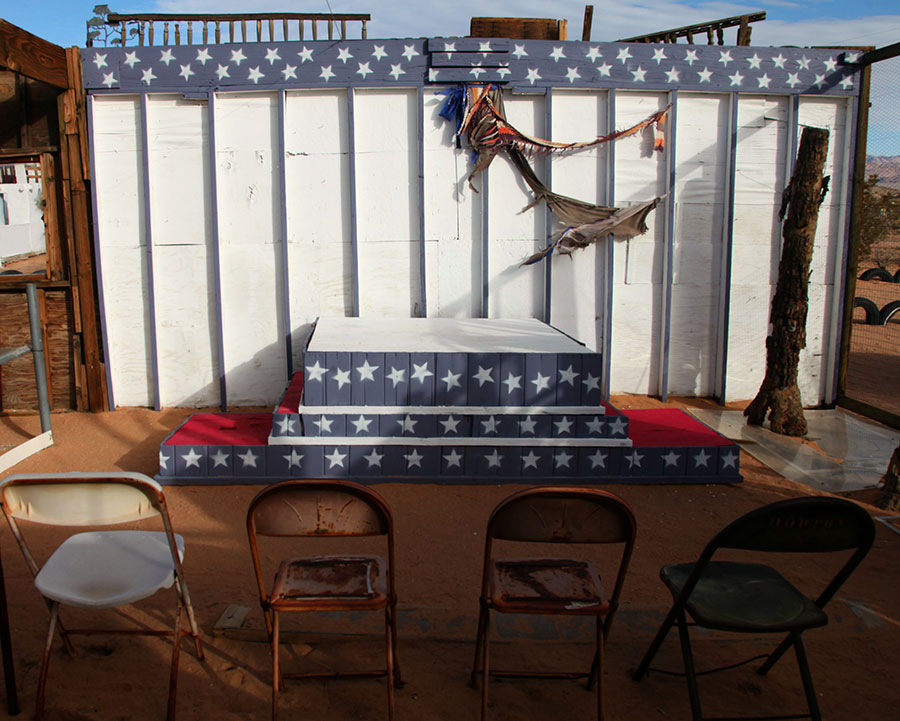Tanja M. Laden September 22, 2015

“Aurora Borealis,” 1999-2001 | Photo: Drew Tewksbury.
“‘Aurora Borealis”
“Noah was short on explanations of his work. He expected people to bring their own meanings and thoughts to his works. The use of discarded materials only increased the intellectual layers and meanings of his pieces. They were not meant to be didactic but quite the opposite. They were springboards into an individual’s personal imagination. When he discussed his work it was always in the broadest of terms. He was quite engaged thinking about aesthetics, the creative process, and their philosophical roots, Heidegger, Kant, Plato, etc.
“‘Aurora Borealis’ is an immersive environment and a critique of American Democratic ideals. It’s an open air assembly hall in three sections, Entry hall, Speakers section and sunken garden. (your image is a view of one of its sides). The entry point is dominated by a printer’s lithographic plate of the Declaration of Independence, broken in half and hanging from a ceiling rafter. There used to be a section designed as a speaker’s platform — now lost to the desert elements and one of the many challenges faced by the Foundation’s mission to preserve and maintain Noah’s works — the subtext of which was a riff on electioneering and the way in which that activity undermined the original ideals expressed in the Declaration of Independence and Constitution. The west facing wall is made of glass bottles, and at sunset, it casts a multicolored glow upon the entire space. Noah did not discriminate about the materials he used to make art and welcomed nature working with him in the creative process. “Noah’s whimsical use of the naturally occurring desert environment conceptually ties the whole piece together by focusing on one of the significant failures of our democratic doctrine — that all men are created equal — perhaps the most significant and enduring phrase of the American revolution.” — Joe Lewis, Professor of Art at the University of California, Irvine and President of the volunteer-run nonprofit Noah Purifoy Foundation

